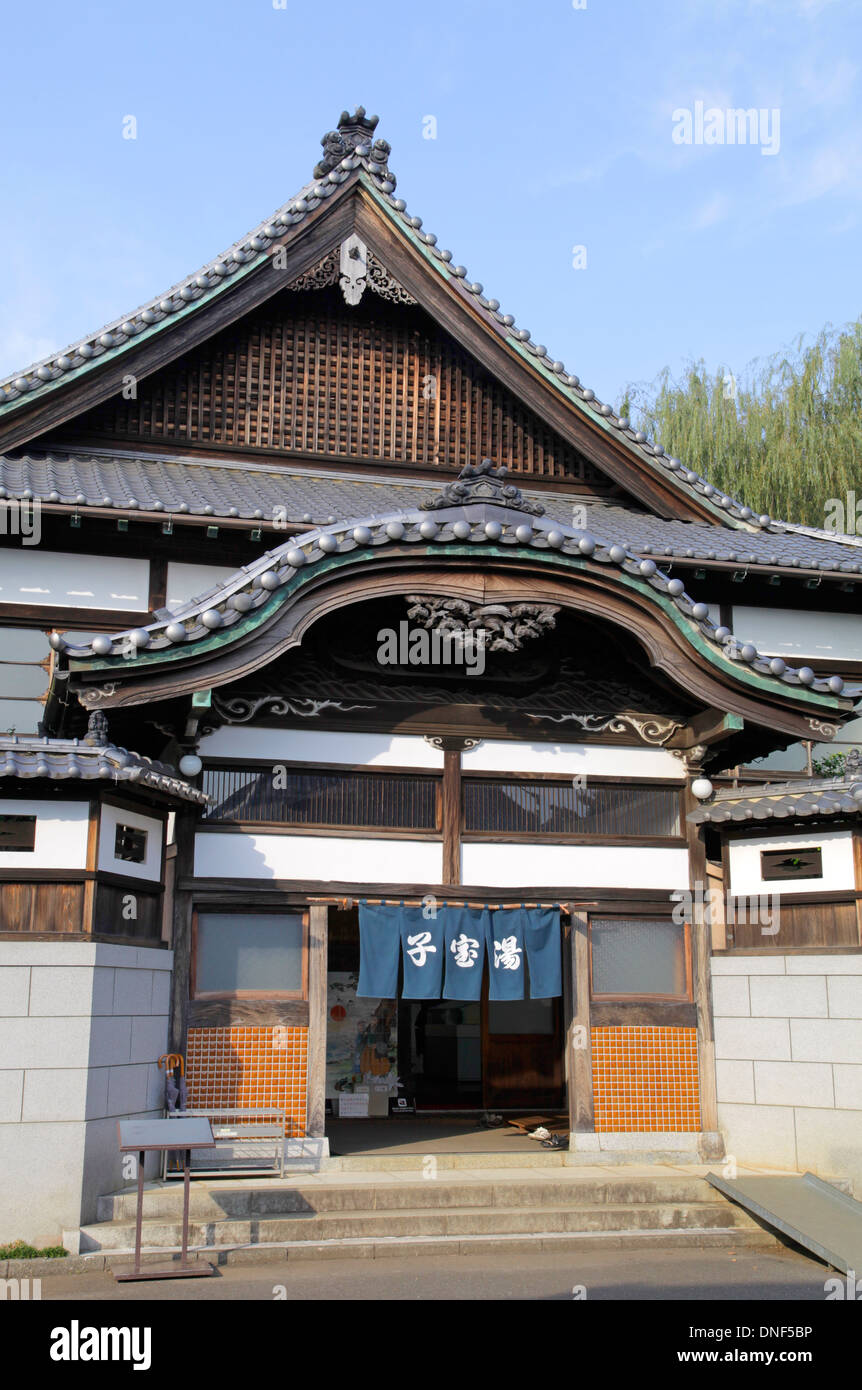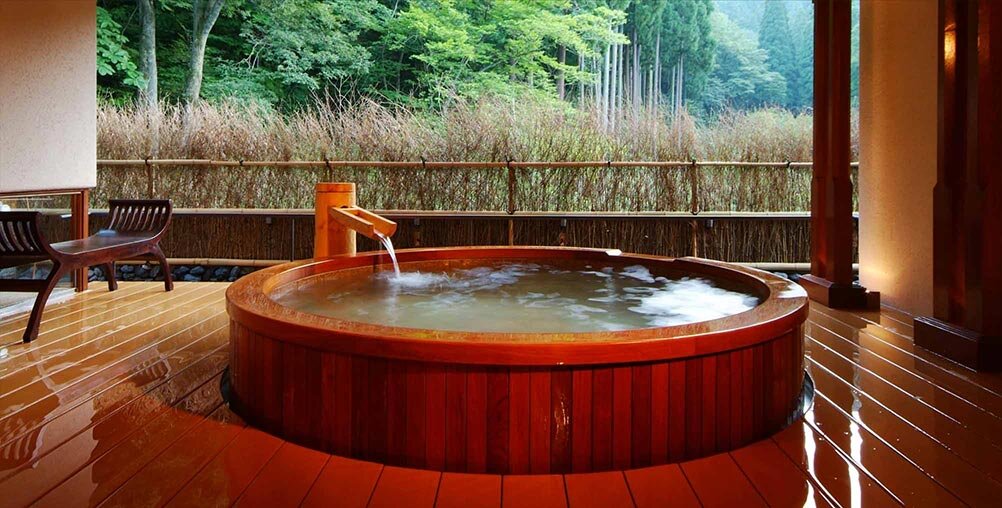11 Things to Know Before Visiting a Japanese Bath
Table Of Content

And of course, getting a private bath at some of Japan’s best hot springs means private baths, where all bets are off. That’s right, unlike hot springs in some other countries, there are no bathing suits allowed in Japanese bath houses. Japanese bath houses are known as “sento” (銭湯), which can be directly translated as “coin bath.” “Onsen” (温泉)which literally means “warm spring” refers specifically to hot springs. Not to be outdone, bathhouse proprietors are sprucing up their standard sentō to take on the competition. This latter switch from platforms to reception desks is helping to attract more female customers. As they add fresh touches to existing locations, designer sentō have come to be characterized by their blend of tradition and innovation.

RELATED TRAVEL
Most often this is Mount Fuji, but it may be a general Japanese landscape, a (faux) European landscape, a river or ocean scene. On rarer occasions, it may also show a group of warriors or a female nude on the male side. Playing children or a female beauty often decorates the women's side. This sento is tucked away in the back of Koreatown down a quiet street. Like most sentos in Tokyo, Mannen-Yu is family run by Nobuyoshi-san and Satsuki-san. There is a hot bath, tepid bath, and cold bath on both the men’s and women’s sides.
A Space for Bathing and Relaxing
This article is a guide to how to bathe properly and have a relaxed time; continue reading for bathing tips, what to bring to the onsen, and more. By nature, bathhouses are simply large baths, but some go even further. They might have jet baths and saunas, while others even use hot spring water, essentially making them an onsen.
Tsubameyu - if you like it hot 燕湯
There’ll be a water faucet, a showerhead, a mirror, and soaps and shampoos for you to use. You’re also likely to see a small bowl that can be used to mix soap into a scrubbing towel or simply to splash water on your head. It is completely normal for men to bathe together in Japan, and communal bathing in general is an important aspect of Japanese culture. Apart from their external appearance, Tokyo bathhouses have a number of other features in common.
Our houses in Tokyo
There’s no need to worry about privacy, as it is completely obscured by trees. As the rotenburo is only on one side of the bathhouse, access to each side is switched between males and females every Friday. The sento uses natural underground thermal water for its variety of baths, which includes a ‘micro-vibra’ massage bath and an electric bath. Occupying four floors, the sento has most of the bells and whistles of Japanese bathhouses, like a jet bath and sauna.
[Hidden Wonders of Japan] Sento in Kumamoto Welcomes Foreigners to Bathe with Mascot - JAPAN Forward
[Hidden Wonders of Japan] Sento in Kumamoto Welcomes Foreigners to Bathe with Mascot.
Posted: Sat, 27 Apr 2024 00:45:00 GMT [source]
Central Tokyo Bath Houses
Children and pregnant women, in particular, should exercise caution. In the past, when bathtubs were not typical features of the average home, it was normal for people to go to a sento to take baths. Even now, some people regularly head to a sento when they want to stretch out in a spacious bathtub, or because they enjoy talking with the other patrons. While showers are a necessary part of everyday life, the Japanese don’t just take showers, they love soaking in bathtubs. Most people in Japan think of the bathtub as washing away not only their sweat and dirt from the day but their fatigue, too. Public baths are segregated by gender, and swimsuits are not worn (read more on bathing rules).
What Amenities are Available at the Sento?

These bathhouses are neighborhood hubs, opening mid-afternoon and closing around midnight. However, being such community centers, there are many unspoken rules, which can be quite confusing. First, though, we’ll focus on the interior of a typical bathhouse.
Top 10 Tokyo bath houses
Mountain Dew opening the Mountain De Yu public bath house in Tokyo for Mountain Day - SoraNews24
Mountain Dew opening the Mountain De Yu public bath house in Tokyo for Mountain Day.
Posted: Tue, 08 Aug 2023 07:00:00 GMT [source]
In the past, when bathhouses first appeared, they were classed as public services, and it was accepted that even yakuza needed to bathe. Though they aren’t public establishments anymore, according to sento ambassador, Stephanie Crohin, it is a common misconception that most sento ban tattooed guests. Based on her experience, the vast majority of places are tattoo-friendly.
Specialty Baths
A Japanese bath house (or sentō) has been an essential part of Japanese culture for over a thousand years. Every day, people from all over the country head to the sentō to enjoy their bath. Many baths have saunas, rest areas, massage chairs and a vending machine for snacks and drinks.
This is the only sento I visited that still has wooden buckets and a Japanese-style garden with carp. Typing in “sento” to Google Maps will yield many results for sentos around Tokyo or anywhere else that you are in Japan. You’ll know that you reached the sento when you find the Noren hanging outside the entrance. It is also not common to wear slippers inside the sento or changing rooms.
Official information from local governments and companies is also presented in multiple languages, offering a wealth of fresh and captivating content. If you're looking for a change in life and exploring new possibilities, enjoy discovering Japan through MATCHA. Sento, or bathhouses, are baths for public use, not tourist destinations. A simple bathhouse consists of rooms for the baths, separated by gender, and a locker room where you get undressed and dressed. Expect to be there for about one hour in total and spend less than 500 yen (rates vary by city; it is 470 yen to use a sento in Tokyo). Depending on the facility, you’ll pay at either the vending machine or straight to a staff member.
It’s popular among Japanese people and foreigners alike, with family, friends, and even colleagues entering in droves. However, for foreigners who have never been to a bathhouse or are from a region where bathhouses are not common, entering into one can be intimidating. This article will tell you all you need to know about Japanese bathhouse basics so that you can take in the experience and fully relax. Unlike some Japanese bathhouses which have a lot of tourists visiting, Shimizu-yu is very traditional and doesn’t provide amenities like soap and shampoo for free. Most locals bring their own but you can purchase a bath set (¥130, ~USD1.20) over the counter. Enter the sento (銭湯) – Japanese bathhouses that can be found in the neighbourhoods of Tokyo.
Upon entering this sento you feel as though you’ve stepped into another world. The artwork on the walls depicts scenes from Shibuya and is relaxing to look at as you enjoy your bath. Baths at lodgings range drastically in terms of quality and size, and can be found at budget-friendly capsule hotels to posh ryokans.
These bathhouses are also often located in scenic areas and may include an open-air bath. Some also try drilling in order to gain access to a hot spring, turning a regular bathhouse into a more prestigious onsen. At the beginning of the Edo period (1603–1867), there were two types of baths common to the eastern and western regions of Japan respectively. In Edo (present-day Tokyo), bathhouses contained sizable pools and were called yuya (湯屋, lit. hot water shop).
Behind the bathing area is the boiler room (釜場, kamaba), where the water is heated. The boiler may be powered by heating oil, electricity, or be fuelled by wood chippings or any other suitable fuel source. The tall chimneys of the boilers are often used to locate the sentō from far away. After World War II, Tokyo often had power outages when all bathhouse owners turned on the electric water heating at the same time. Tattoos are not common in Japan, and it was once thought that if you had a tattoo, you were a member of the notorious Yakuza. Therefore, sentos and onsens banned tattoos from the bathhouse.
Though many places will put up signs in English stating their rules on tattoos, it’s best to check the bathhouse’s website or call in advance. Small tattoos may be hidden by towels while other bathhouses may provide patches, however, this is not considered standard. Depending on the facility, this may or may not be the last set of lockers. Regardless, from this point you will put away your day clothes and all your belongings. If it is clear that the baths are connected to this locker room, feel free to proceed to the wash stations. Japanese bathhouses require full nudity, but you may bring you small, rectangular towel with you.
Komentar
Posting Komentar